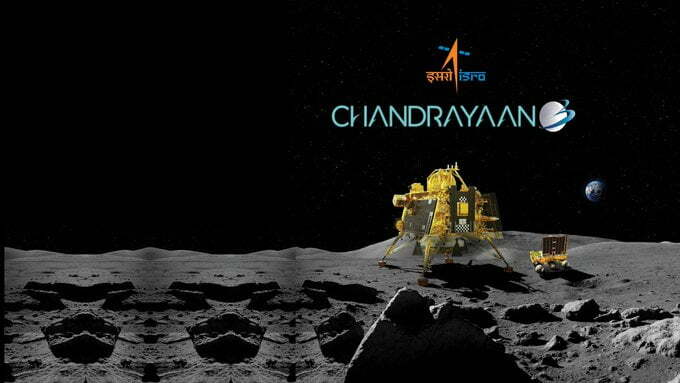
India’s Chandrayaan-3 robotic spacecraft made a successful landing on the Moon on Wednesday. It landed near the south pole of the moon at around 6:03 p.m. IST ( 8:33 a.m. EDT). India has made history by becoming the first country to explore the potential for water in the polar region.
Key points
- India demonstrated its capabilities in Space exploration and established itself as a international Superpower in space, with the landing of the Chandrayaan-3 mission safely on the moon’s south pole on Wednesday.
- “This success belongs to all of humanity,” Indian Prime Minister Narendra Modi said.
- This accomplishment makes India the fourth country – after Russia, the US, and China – to land on the Moon and the first to do so on the moon’s south pole.
Chandrayaan-3 is a major milestone for the ISRO. The successful landing of the lander and the rover demonstrate India’s capabilities in space exploration. The scientific data collected by the mission will help us to better understand the Moon and its formation.
Chandrayaan-3 Mission:
— ISRO (@isro) August 23, 2023
Updates:
The communication link is established between the Ch-3 Lander and MOX-ISTRAC, Bengaluru.
Here are the images from the Lander Horizontal Velocity Camera taken during the descent. #Chandrayaan_3#Ch3 pic.twitter.com/ctjpxZmbom
“India is on the moon,” declared Sreedhara Somanath, head of the India Space Research Organization, as Prime Minister Narendra Modi watched while waving an Indian flag.
“All the people of the world, the people of every country and region: India’s successful moon mission is not just India’s alone … this success belongs to all of humanity,” Modi said, speaking on the ISRO webcast of the event.
“We can all aspire for the moon, and beyond,” Modi added.
The Indian Space Research Organisation’s (ISRO’s) Chandrayaan-3, which means “mooncraft” in Sanskrit, took off on a rocket called Launch Vehicle Mark-III and flew for six weeks, covering around 380,000 kilometers on its way to the moon.
Chandrayaan-3 is the third mission of the Indian Space Research Organisation (ISRO) to the Moon. The mission was launched on 14 July 2023, at 2:35 pm IST, from the Satish Dhawan Space Centre in Sriharikota, Andhra Pradesh. The spacecraft consists of a lander, a rover, and an orbiter.
The lander is named Vikram, after Vikram Sarabhai, the father of Indian space research. The rover is named Pragyan, which means “wisdom” in Sanskrit. The orbiter is named Chandrayaan-3, after the first two Chandrayaan missions.
The mission positioned Vikram at a place with abundant water resources, which could potentially lead to the establishment of a permanent moon base.
After a brief period of motion at a height of 150 meters above the lunar surface, Chandrasekaran-3 slowed down while in orbit. It then began a slow gradual vertical descent, culminating in a successful landing.
India, with its increasing ambition in space, was rejoicing upon the successful landing of Chandrayan-3, garnering the support of the nation’s population of over one billion people.
The moon’s south pole has become a popular destination for exploration due to recent discoveries by India’s Chandrayaan-1 of water ice deposits on the moon. In September 2019, India attempted a landing at the south pole. However, due to a software glitch, the Chandrayaan-2 mission crashed into the moon’s surface.
India’s National Space Agency (ISRO) has made an historic soft landing close to the water-rich south pole of the moon, just a few days after Russia’s Luna 25 moon mission crashed on the moon’s surface.